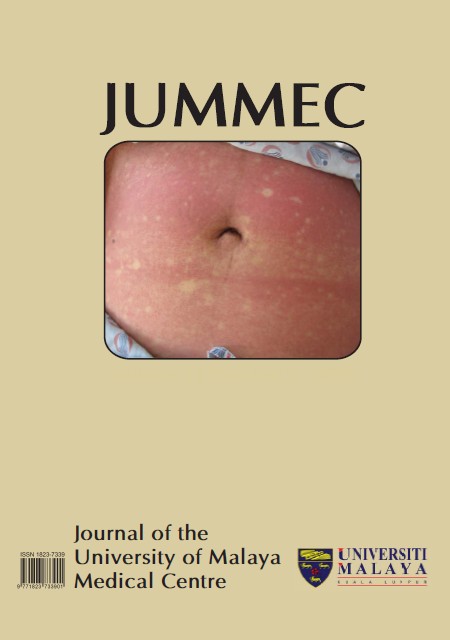PREVALENCE OF SLEEP DISTURBANCE AMONG NURSES IN A MALAYSIAN GOVERNMENT HOSPITAL AND ITS ASSOCIATIONWITH WORK CHARACTERISTICS
Abstract
The objective of this study was to determine the prevalence of sleep disturbance with work characteristics among nurses in the Melaka Hospital, Malacca, Malaysia. This was a cross sectional study conducted in Melaka Hospital. Universal sampling was conducted and a Malay version of the Pittsburgh Sleep Quality Index (PSQI) questionnaire was used in data collection. Socio-demographic characteristics such as age, marital status, number of children and work characteristics such as type of work schedule and duration were also enquired. Factors associated with poor sleep quality were compared between those nurses with good sleep quality by using logistic regression. There were 607 nurses who completed the questionnaire with a response rate of 73.1%. There was a moderate prevalence (57.8%) of poor sleep quality (PSQI > 5) in all study subjects. The prevalence of sleep disturbance was more widespread among nurses who worked shifts (62.0%) compared to non-shift working nurses (41.5%) p<0.001. A logistic regression analysis showed that age, marital status and unit group were the major associating factors of poor sleep quality. Sleep disturbance decreased with increasing age (OR = 0.42, 95% CI 0.25, 0.73) while married nurses (OR = 2.3, 95% CI 1.42, 3.82) and those in the category of intensive group (OR = 2.1, 95% CI 1.1, 4.1)
were more prone to have sleep disturbances. In conclusion, this study revealed moderate prevalence of sleep disturbance among nurses working in Melaka Hospital but it was not associated with the work shifts. Age, marital status and work environment especially in the intensive group unit seemed to be factors associated with reduced global sleep quality among nurses in this study.
Downloads
Downloads
Published
Issue
Section
License
All authors agree that the article, if editorially accepted for publication, shall be licensed under the Creative Commons Attribution License 4.0 to allow others to freely access, copy and use research provided the author is correctly attributed, unless otherwise stated. All articles are available online without charge or other barriers to access. However, anyone wishing to reproduce large quantities of an article (250+) should inform the publisher. Any opinion expressed in the articles are those of the authors and do not reflect that of the University of Malaya, 50603 Kuala Lumpur, Malaysia.


